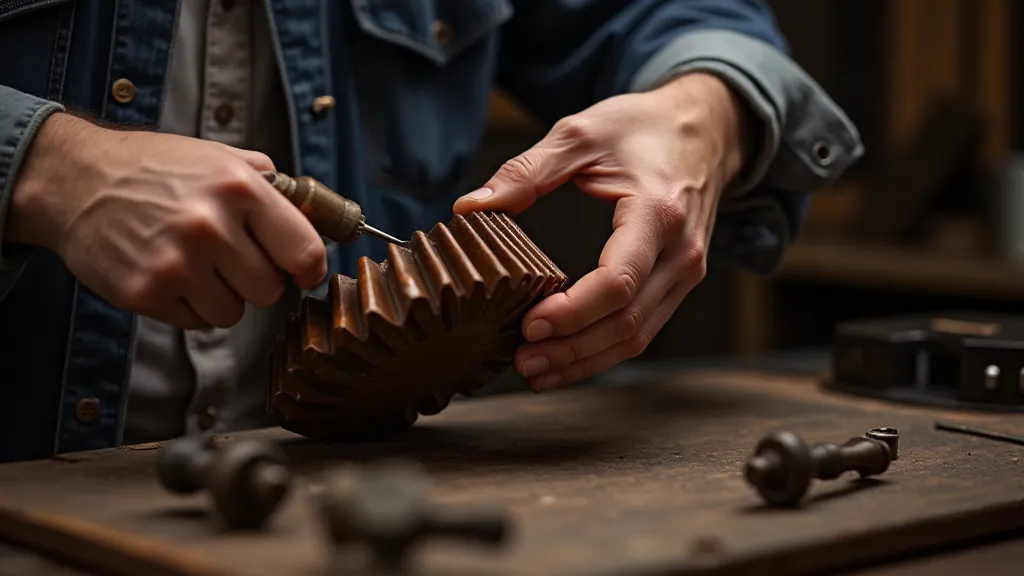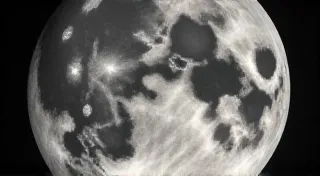Fractured Light: Mastering the Art of Diffraction Spike Interpretation
There's a quiet poetry to astrophotography, isn's there? It's not simply about pointing a camera at the night sky; it's about listening to the cosmos, a patient communion with ancient light. I remember, as a child, being mesmerized by an antique accordion my grandfather kept in his workshop. The bellows, worn smooth with years of playing, held within them the memory of countless melodies. Just as those bellows amplified and transformed the musician’s touch, light, too, bends and transforms as it passes through an optical system, revealing secrets if we learn to read its patterns. And amongst those patterns, those elegant, often misunderstood, radial lines surrounding bright stars – diffraction spikes – hold a surprisingly deep and resonant story.
Most consider diffraction spikes to be mere photographic artifacts, a byproduct of lens design. They're often discarded, digitally erased in pursuit of "cleaner" images. But to dismiss them is to miss a crucial element of the astrophotographic experience, a subtle language spoken by the stars themselves. These spikes aren’t just pretty shapes; they are fingerprints of the optical system, whispers of environmental conditions, and unexpected windows into understanding the mechanics of light. The delicate dance of light and optics can be truly captivating, almost as captivating as trying to capture the ephemeral bloom of a distant nebula.

The Physics of the Radiance: Understanding Diffraction
Before we can truly appreciate and utilize diffraction spikes, we need a basic grasp of the physics behind them. Diffraction, at its core, is the bending of waves around obstacles. Light, behaving as a wave, doesn’t travel in perfectly straight lines. When it encounters the sharp edges of a lens aperture – the diaphragm blades – it spreads out, creating a pattern of constructive and destructive interference. This interference results in those characteristic spikes radiating outwards from the star.
The shape and number of these spikes are directly related to the shape of the aperture. A circular aperture produces a more complex, multi-pointed diffraction pattern. However, most camera lenses use hexagonal aperture blades for cost and efficiency reasons. This hexagonal shape creates the familiar six-pointed star we often see in astrophotography.
A History Etched in Light: Aperture Design and Evolution
The design of aperture blades has evolved significantly over time. Early lenses, prized for their quality and character, frequently had fewer blades – sometimes just three or four. This resulted in diffraction patterns with fewer, more pronounced spikes. These older designs, often found in vintage cameras, are now highly sought after by collectors and astrophotographers alike. There's a certain charm and visual uniqueness inherent in images captured with these older systems, a tangible link to a time when craftsmanship was paramount.
Consider the evolution of optical manufacturing. Mass production demanded simpler designs. The focus shifted from artistry to affordability. While modern lenses are undoubtedly sharper and often correct for aberrations more effectively, they often lack the visual personality of their predecessors. The diffraction spikes, in a way, become a symbol of that lost character. The pursuit of perfection often sacrifices the quirks that make older equipment so endearing, a trade-off that impacts the overall aesthetic. Even the simplest adjustments, like careful lens positioning, can dramatically alter the resulting image and reveal hidden beauty, a process akin to coaxing a forgotten melody from a vintage accordion.
Crafting Your Own Spikes: Lens Selection and Positioning
While you can’s fundamentally alter the physics of diffraction, you *can* manipulate the appearance of diffraction spikes to a degree. The first step is understanding your lens's aperture blade count. Information about a lens's aperture blade count is usually found in the technical specifications. The more blades, the more delicate and rounded the spikes will appear.
Furthermore, the *positioning* of the lens relative to the star can subtly influence the appearance of the spikes. Tilting the camera slightly can change the angle at which the spikes appear, adding a dynamic feel to the image. Experimentation is key. Don't be afraid to play with different angles and settings to find what looks best. The subtleties involved in achieving a truly captivating image can be quite intricate, requiring a deep understanding of how light behaves and interacts with different optical systems. Understanding the nuances of light behavior—how it bends, diffracts, and interferes—is what separates the casual observer from the skilled astrophotographer.

Beyond Aesthetics: Decoding Environmental Clues
But the significance of diffraction spikes doesn’t end with aesthetics. They can also provide subtle insights into environmental conditions. Atmospheric turbulence, for example, can subtly distort the shape and clarity of the spikes. A “wobbly” or blurred spike pattern often indicates a turbulent night, providing valuable information for assessing image quality. The way these spikes shimmer and dance can tell a story about the air above, revealing hidden clues about atmospheric stability.
Light pollution, too, can affect the appearance of diffraction spikes, making them appear fainter or more diffuse. By carefully observing the patterns, experienced astrophotographers can gain a better understanding of the light pollution conditions at their location, helping them to plan future observing sessions. Sometimes, despite our best efforts, capturing those faint details can seem almost impossible, much like trying to preserve the original beauty of a well-worn instrument.
Restoration and Preservation: A Legacy of Light
The allure of vintage lenses and the beautiful diffraction spikes they produce extends beyond astrophotography. Collectors actively seek out these older lenses, recognizing their historical significance and unique visual character. Restoring these lenses, however, requires skill and patience. It’s akin to restoring an antique accordion – meticulously cleaning and repairing each component, preserving a piece of history. Often, these older optical systems hold a beauty that goes beyond mere functionality; they embody an era of craftsmanship and attention to detail that is increasingly rare today.
Often, older lenses suffer from haze or fungus. While these can be removed, the process can be delicate and requires specialized knowledge. The goal isn't simply to return the lens to perfect condition; it's to preserve its character, to retain the marks of time that tell its story. This careful preservation extends beyond the optics themselves, often encompassing the leatherette, metalwork, and overall construction of the instrument, ensuring that its legacy endures.

The Science Behind the Beauty: A Deeper Dive
Let's explore the underlying physics in more detail. Diffraction isn’t simply about light bending around edges; it's a consequence of the wave nature of light interacting with physical boundaries. Each aperture blade acts as a secondary wavefront source, emitting circular waves that overlap and interfere. Constructive interference occurs when waves are in phase, creating bright spots. Destructive interference occurs when waves are out of phase, creating dark spots. This intricate dance of waves results in the characteristic diffraction pattern. The number of spikes directly corresponds to the number of blades, but the complexity of the pattern is influenced by the shape of the blades and their spacing.
Furthermore, the concept of Airy disk is critical to understanding the point spread function of a lens. The Airy disk represents the ideal diffraction pattern of a point source of light. In reality, aberrations and imperfections in the lens distort this ideal pattern. The diffraction spikes are part of this distorted Airy disk, providing clues about the quality of the lens.
A Deeper Connection to the Cosmos
Ultimately, mastering the art of diffraction spike interpretation is about more than just capturing pretty images. It's about developing a deeper connection to the cosmos, a heightened awareness of the interplay between light, optics, and environment. It’s about listening to the whispers of the stars, understanding their subtle language, and appreciating the legacy of craftsmanship that has brought us closer to the beauty of the night sky. The beauty that can be discovered, both in the cosmos and in the instruments we use to observe it, is truly remarkable.
Just as the melodies coaxed from an antique accordion resonate with a timeless beauty, so too do the elegantly fractured patterns of diffraction spikes offer a unique and rewarding perspective on the wonders above. It’s a constant reminder that even the simplest tools can unlock profound understanding and aesthetic appreciation when approached with curiosity and attention to detail.





